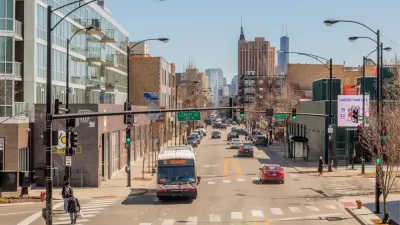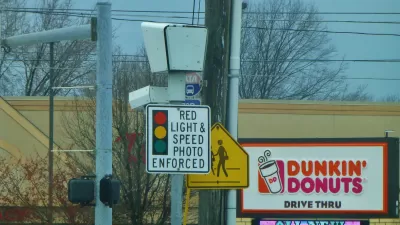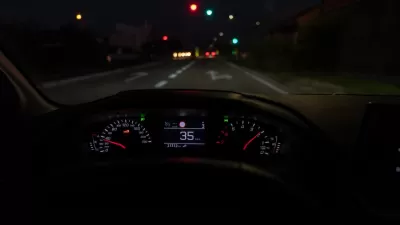A Northwestern University study found that Chicagoans ran fewer red lights after cameras were installed, even at intersections that don't have cameras.

Because of its troubled start, the red light cameras program in Chicago has been the subject of a study from Northwestern University. The study found that cameras do improve safety at intersections with cameras. "In addition to the overall finding that injury crashes dropped by 10 percent thanks to the cams, the study found that while rear-end crashes increased by 14 percent at intersections where cameras were installed, consistent with other cities, the more dangerous T-bone and/or turning crashes decreased by 19 percent," John Greenfield reports for Streetsblog Chicago. The study also found an additional benefit, "a never-before-documented 'spillover effect' that is also resulting in less red light running at intersections that don’t have the cams," Greenfield writes. The authors of the study found that fear of cameras works as a deterrent for drivers who may not know which intersections have cameras.
Shortly after Rahm Emanuel's government installed red light cameras, a massive bribery scheme was uncovered that sent one city official to jail on a ten-year sentence. The program was a big issue in the mayoral campaign for Emanuel’s reelection, with challenger Chuy Garcia vowing to remove the cameras. This study was undertaken, in part, to get an independent perspective on the cameras and gauge their impact on the city.
FULL STORY: Red Light Cams Improve Safety, Have “Spillover Effect” on Other Intersections

Alabama: Trump Terminates Settlements for Black Communities Harmed By Raw Sewage
Trump deemed the landmark civil rights agreement “illegal DEI and environmental justice policy.”

Planetizen Federal Action Tracker
A weekly monitor of how Trump’s orders and actions are impacting planners and planning in America.

The 120 Year Old Tiny Home Villages That Sheltered San Francisco’s Earthquake Refugees
More than a century ago, San Francisco mobilized to house thousands of residents displaced by the 1906 earthquake. Could their strategy offer a model for the present?

Indy Neighborhood Group Builds Temporary Multi-Use Path
Community members, aided in part by funding from the city, repurposed a vehicle lane to create a protected bike and pedestrian path for the summer season.

Congestion Pricing Drops Holland Tunnel Delays by 65 Percent
New York City’s contentious tolling program has yielded improved traffic and roughly $100 million in revenue for the MTA.

In Both Crashes and Crime, Public Transportation is Far Safer than Driving
Contrary to popular assumptions, public transportation has far lower crash and crime rates than automobile travel. For safer communities, improve and encourage transit travel.
Urban Design for Planners 1: Software Tools
This six-course series explores essential urban design concepts using open source software and equips planners with the tools they need to participate fully in the urban design process.
Planning for Universal Design
Learn the tools for implementing Universal Design in planning regulations.
Clanton & Associates, Inc.
Jessamine County Fiscal Court
Institute for Housing and Urban Development Studies (IHS)
City of Grandview
Harvard GSD Executive Education
Toledo-Lucas County Plan Commissions
Salt Lake City
NYU Wagner Graduate School of Public Service





























